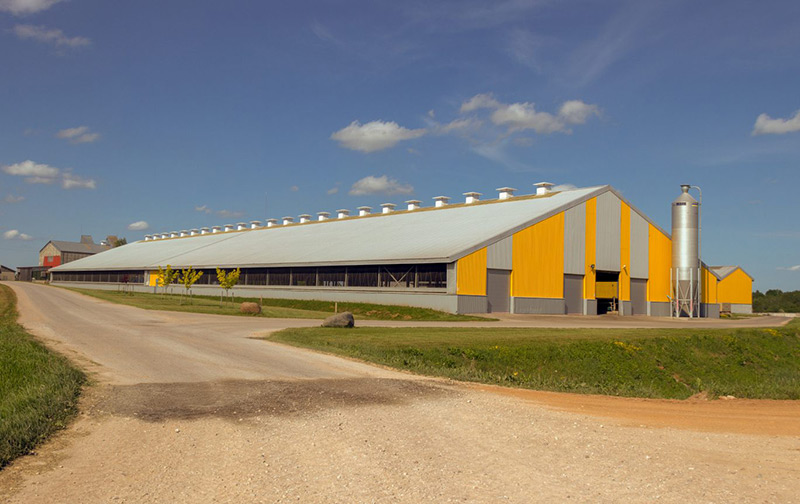Industrial energy savings with LoRaWAN: 3 case studies show huge economic impact
Talkpool Article, July 1st, 2019
By deploying mass volumes of low cost wireless sensors on wide area networks, energy savings in large industrial operations are enabled in a cost-efficient way. Three case studies by Danish energy savings company DS Energy, as a testament of the possibilities with LoRaWAN solutions.

A production-line machine that consumes enormous amounts of energy outside of its productive hours or industrial washing machinery with a spillover of thousands of liters of water a day, does that sound familiar? Probably not, because most energy waste is hidden from the naked eye and discovered only after huge losses have already been made. Therefore, it is crucial for industrial companies to start measuring energy consumption and expose large cost wastes.
DS Energy: from M-Bus to LoRaWAN
Industrial energy savings is the domain of one of Talkpool’s key customers in the IoT business, namely DS Energy. DS Energy is a Danish company with a proven track record in energy saving solutions. The company is switching from M-Bus technology based solutions to LoRaWAN technology based solutions, with the help of Talkpool’s LoRaWAN products and services.
“Talkpool is an essential partner for us in our transition from M-Bus to LoRaWAN, as they offer such a complete solutions portfolio and have extensive experience with the technology. Their portfolio includes everything from sensor devices, network services and data handling. Together we enable the LoRaWAN ecosystem in several locations in Denmark.”
Jarl Gorridsen, Managing Director at DS Energy
1. Industrial machinery – Pump production
The first use case comes from an industrial manufacturing process in which heavy machinery is used. The client company manufactures water pumps, which arrive on the production line very oily and scratched. During the production process the pumps are cleaned, packaged and prepared for commercial distribution. In this process, lots of water, chemicals and electricity are used. This production line is a harsh environment, and valves and other control units suffer heavily from the daily operations and start to wear off. This doesn’t show on the outside, but heavy wastes in the production process start to occur.
“Because we measured the energy consumption we could immediately see a change in consumption patterns when wastes started to occur. Upon this, we took appropriate follow-up actions and immediately the energy consumption went back to its normal level. In this specific case, this saved between two- to four thousand liters of clean drinking water every day for just one machine – and furthermore, 25% of this wasted water was heated to 65 degrees with electricity. This is just one of several dozens of de-greasing lines that are present at our customer site. Degreasing facilities are common standard equipment in most manufacturing industry within metal and plastic treatment.”
Jarl Gorridsen, Managing Director at DS Energy
2. Livestock farming
The second use case comes from an application on a chicken farm. This chicken farm is the home of more than 100.000 chickens and the temperature is carefully controlled at all times to ensure that the small chickens don’t freeze. These large metal stables need constant heating, which is automatically done by the use of temperature sensors.
“At one point, in one of the three stables, the temperature sensor started to malfunction, which caused the heating to work overtime. Since we were measuring the energy consumption, we could see a 100% increase in energy consumption on the heating supply. The potential loss on this chicken farm amounted to a pure waste of around 20.000 EUR on an annual basis. The client quickly replaced the faulty temperature sensor and prevented this from becoming a reality.”
Jarl Gorridsen, Managing Director at DS Energy

3. Compressed air
The final exemplary case, just like the first, comes from a manufacturing line. In this manufacturing process, hidden machines in the basement feed the production line with compressed air. The air tighter this line is, the less losses occur, which can be optimized by detecting losses with thermal photography of the pipes, to see changes in thermal conditions. By connecting a LoRaWAN wireless pulse transmitter to the multi-amp meter in the steering cabinet of the compressor, here energy consumption in off-production hours were quickly detected.
“We discovered straight away that there was a considerable consumption on weekends without production. It was visible immediately after the first weekend of metering. The source of the leak was an extensive line of grapping equipment with numerous end-stations. Very quickly stop valves on the main feeding tube were installed, and the savings occurred instantly. This was only one compressor out of 12 and the daily waste of electricity amounted to 40-50 EUR”
Jarl Gorridsen, Managing Director at DS Energy
LoRaWAN vs M-Bus
“Adding wireless sensors to a production line in the end comes down to the question whether the benefits outweigh the costs. Compared to previously existing technologies, LoRaWAN solutions come down to a much lower price point, while the performance is outstanding, with good network coverage in hazardous, industrial environments. This breakthrough in price-performance ratio is how LoRaWAN enables a new era of automation.”
Stefan Lindgren, CTO at Talkpool
The power of every measurement is something that’s felt very strongly in industrial operations such as manufacturing processes, where every cent counts and large wastes are a no-go. These three simple and clear real life use cases are a testimony to the potential of LoRaWAN based IoT solutions in the domain of industrial energy savings.
With thanks to DS Energy, website: dsenergy.dk. Jarl Gorridsen: mail: jg@dsenergy.dk or +45 53 61 46 61
